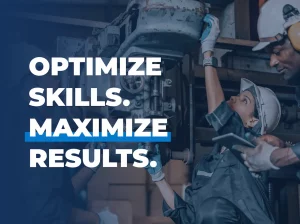
This lesson is designed so that no prior knowledge is required. However, a know-ledge of applied mathematics is recommended.
This lesson explains the concepts of lubrication, friction, and viscosity and demonstrates the benefits of a proper lubrication program. Additionally, the properties of common solid, semi-solid, and liquid lubricants are described as well as the benefits associated with synthetic lubricants and the functions of additives and inhibitors. Common types and causes of lubricant contamination are described and proper methods of lubricant storage are demonstrated.
This lesson is designed for participants familiar with the fundamentals of lubrication. A knowledge of applied mathematics is recommended.
This lesson explains and demonstrates how various types of lubrication systems operate, including ring, bath, splash, constant level and forced feed lubrication systems. Participants learn pertinent maintenance checks to make for each type of system. Manual devices used to apply lubricant are covered as well as the purpose of filters and the importance of filter maintenance in lubrication systems. Additionally, the lesson indicates the benefits of oil sampling and analysis and identifies several factors which can cause lubrication failure.
This comprehensive interactive multimedia training program, consisting of two lessons, trains participants to recognize various types of lubrication systems and their maintenance requirements, including ring, bath, splash, constant level, and forced feed lubrication systems, as well as understand how they operate. Participants also learn the importance of following lubrication schedules, how to change common types of oil filters, and how to properly handle and store lubricants to prevent lubricant contamination.
This program is excellent for training oilers, mechanics, and millwrights as well as for the multi-craft needs of process and manufacturing facilities.